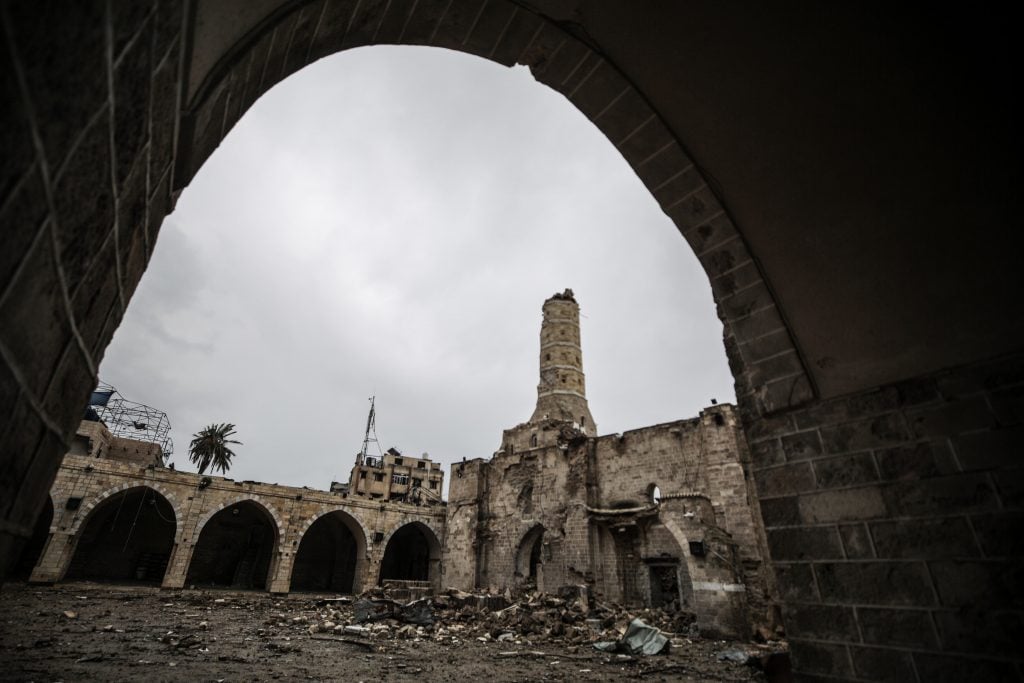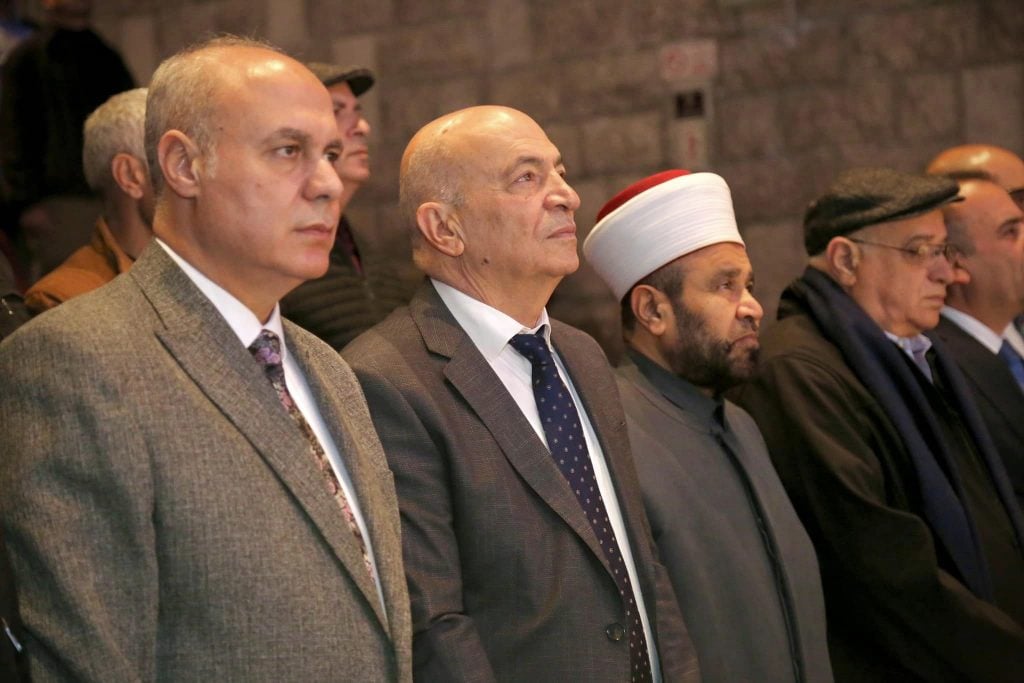Archaeology & History
Israel ‘Deliberately’ Targeted Archaeological Sites in Gaza, According to Palestinian Minister
Israel has previously been accused of looting the collection of a museum established by Birzeit University.

Israel has previously been accused of looting the collection of a museum established by Birzeit University.

Adam Schrader

Israel “deliberately” targeted at least 188 archaeological and historical sites in Gaza, the Palestinian Minister of Tourism and Antiquities Hani Hayek alleged on November 25. Earlier this year, the ministry said at least 200 such sites had been destroyed.
Hayek delivered his remarks at the opening of a seminar titled “Destruction of Cultural Heritage in Gaza” attended by other Palestinian officials, the ministry said in a news release.
“Hayek emphasized that the Israeli occupation deliberately targets archaeological and historical sites to erase the history of the Palestinian people,” the ministry said. “Archaeological and historical sites constitute an important part of the national identity of the Palestinian people and are the best evidence of our history as a Palestinian people on this land.”
Beyond the 188 archaeological sites said to have been deliberately targeted, many museums that contain art and artifacts were allegedly destroyed by Israeli forces—in addition to mosques and historical churches, the ministry said.

Palestinian Minister of Tourism and Antiquities Hani Hayek said some 188 archaeological and historical sites in Gaza had been “deliberately” targeted by Israel amid the ongoing war. Photo courtesy of Palestinian Ministry of Tourism and Antiquities
Culture Minister Imad Hamdan also thanked the tourism ministry for forming a committee to inventory damage to Palestinian cultural heritage sites and the institutions working to preserve Palestinian heritage. Hamdan then accused Israel of “trying to distort, obliterate and steal” the heritage of Palestinians.
Last month, the United Nations Educational, Scientific and Cultural Organization—better known as UNESCO—released a damage assessment report with data from mid-September that found Israel had destroyed at least 69 sites in Gaza. UNESCO used satellite imaging and other data to make its assessments of the destruction by Israel.
The UNESCO report found that those cultural sites damaged throughout Israel’s war on the Palestinian enclave included 10 destroyed religious sites, 43 destroyed buildings of historical or artistic interest, two destroyed depositories of movable cultural property, six destroyed monuments, one destroyed museum and seven destroyed archaeological sites.
Those sites included a Roman cemetery in Gaza City, the Saint Porphyrius Orthodox Church Complex, and a Byzantine mosaic discovered in a refugee camp in Gaza. A seventh-century mosque, the Omari Grand Mosque in Gaza City, was also destroyed.
Israel has also been accused of looting the collection of a national museum established by Birzeit University before then bombing it “to cover up for the crime.”
International organizations dedicated to the protection of cultural sites like Blue Shield and the International Council of Museums have stayed mostly quiet about the conflict in Gaza, apart from a handful of one-off statements.
In January, the ICOM said it considered damage caused to museums and cultural sites “unacceptable” and a “distinct violation of humanitarian law” but has seemingly stayed mum since. Last November, the Blue Shield said it stood by “ready to assist” in the protection of cultural heritage but similarly has remained largely quiet ever since.
“Gaza has a very rich archaeological and historical heritage going back to prehistoric times with significant Roman and later remains,” Blue Shield’s November 2023 statement reads.
Meanwhile, in Lebanon, UNESCO has added 34 cultural properties to its list for enhanced protection amid Israel’s shelling and bombing of its northern neighbor.